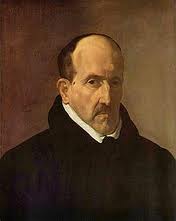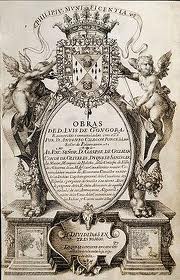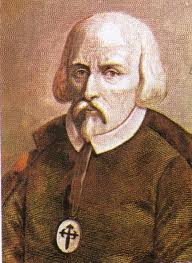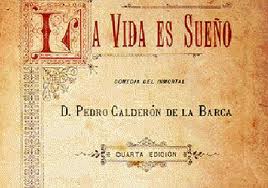Spanish Verse of the Baroque
From the unmistakable language developed in his poetry by Luis de Góngora, to the meditative masterpiece that is Calderón de la Barca's Life Is a Dream, the development of Spanish verse during the XVII century competes with the most accomplished output in any language at any time. Proof of this remarkable feat is that most people interested in Spanish language schools are still attracted to works written some 400 years ago.
Luis de Góngora and Francisco de Quevedo

The Baroque poet par excellence, Luis de Góngora was born in Cordoba in 1561. Formally educated at the University of Salamanca, he entered the clergy as a young man, developing simultaneously a passion for poetry and an addiction to card games. His purposely complicated style sought to carve beauty out of words, regardless of the theme or the subject.
His most ambitious project, in this sense, might have been the Soledades, an unfinished collection of lyrical compositions that revolve around the pangs of solitude in different circumstances without ever embarking on any narrative exercise. As a matter of fact, Luis de Góngora's style was so distinctive and caused such controversy that, despite the fact that it was common at the time, its name changed from culteranismo to gongorismo.
Góngora's culteranismo corresponds to the euphemism developed in Elizabethan times by contemporary playwrights, such as John Lyly. Within the intellectual establishment of Spain at the time, this style found a number of backers and a substantial amount of detractors.

Be that as it may, Luis de Góngora's most accomplished work, The Fable of Polyphemus and Galatea has passed down the generations as one of the great masterpieces of Baroque literature. The theme of the cyclops' unrequited love for Galatea serves as background for the poet to develop a detailed and thoughtful treatise dealing with the jealousy, the flattery and the general condition of courtly life in the XVII century.
It was precisely this fiercely competitive environment, added to the antagonism caused by Luis de Góngora's refined, if somewhat pompous, style which lead to the bitter feud he held with his near contemporary, Francisco de Quevedo. While Quevedo was best known as a poet at the time, it is his picaresque novel, The Swindler, which has passed down the ages as his most accomplished work.
Be it in his prose or his verse, however, Quevedo's style, known as conceptismo, contrasted sharply with Luis de Góngora's culteranismo and established itself as the opposite pole, the alternative, as it were, in the dichotomy that would dominate the intellectual argument of the time.
Dramatic Verse

Parallel to the development of mature and highly specific poetic styles, the favoured form of expression in theatre was also verse. And Spanish Baroque drama, from Lope de Vega to Calderón de la Barca, is as good as it gets: starting with the redefined canon of the 'new comedy', Spanish Baroque drama would lose any semblance of unity of style, blending a great number of structures in the creation of a complex and entertaining world.
If anything, Lope de Vega's preferred style corresponded to conceptismo, even though he would use different tones to represent different characters. As, too, would do another remarkable playwright of the time, Guillén de Castro, perhaps the most accomplished writer from the school of Valencia, whose Las mocedades del Cid was widely acclaimed both home and abroad, to the point where it served as inspiration to Corneilles's Le Cid.
And yet, the style of Spanish Baroque drama is anything but uniform. While Lope de Vega made explicit the rules that would govern Spanish theatre for the following generation, there is a palpable difference between his work and Tirso de Molina's, or, even more evidently, Calderón de la Barca's. Indeed, it would be the latter who would continue the development of drama in Spain after the death of Lope de Vega, the great master, in 1635.

Which is precisely the year when Calderón de la Barca's most famous play, Life Is a Dream was premiered in Madrid. The writer's progression from Lope de Vega's 'new comedy' to his own philosophical drama reaches its climax with Life Is a Dream. Meditative in its tone and highly concerned with lofty concepts, the play advances at the slow pace of the language it uses - a compromise, perhaps, between culteranismo and conceptismo.
